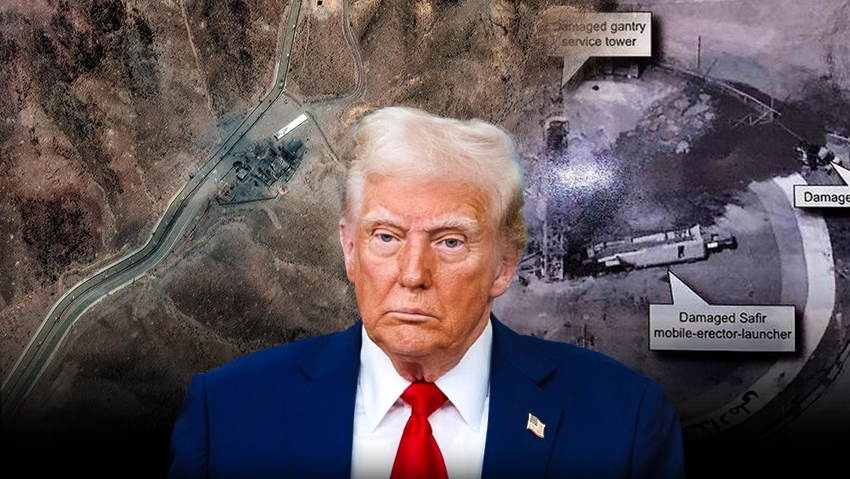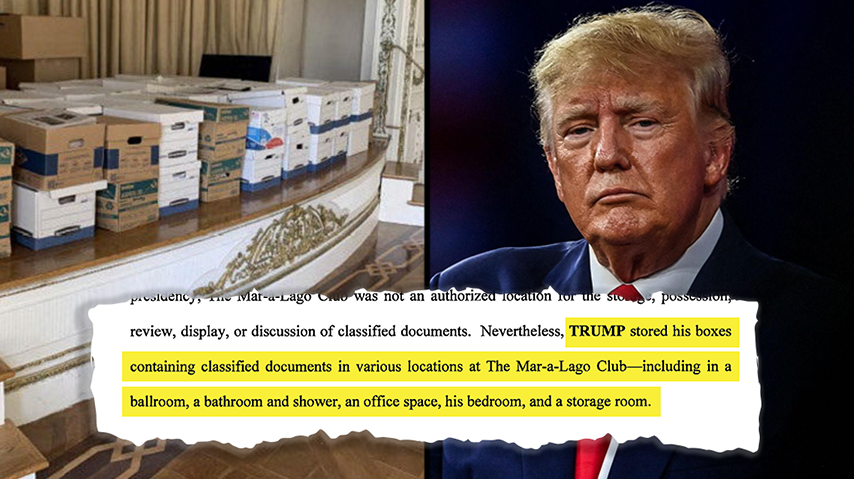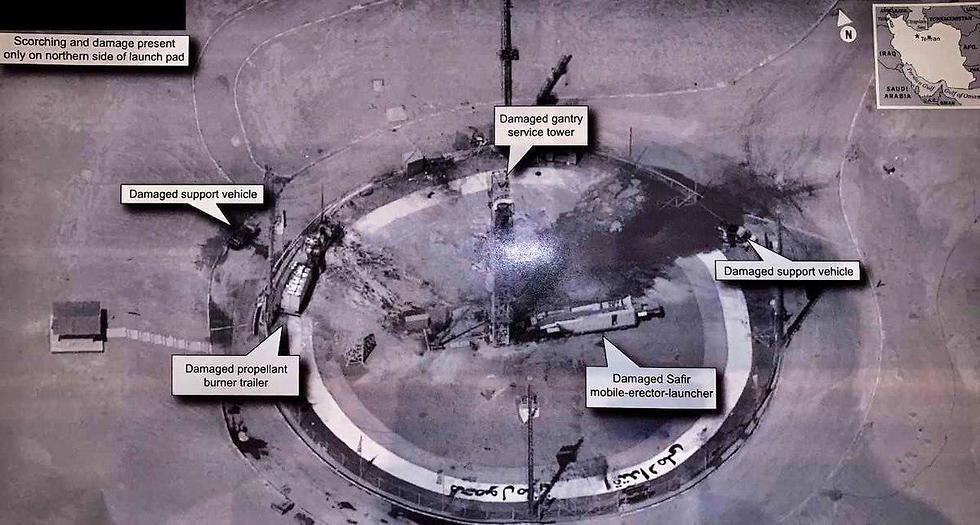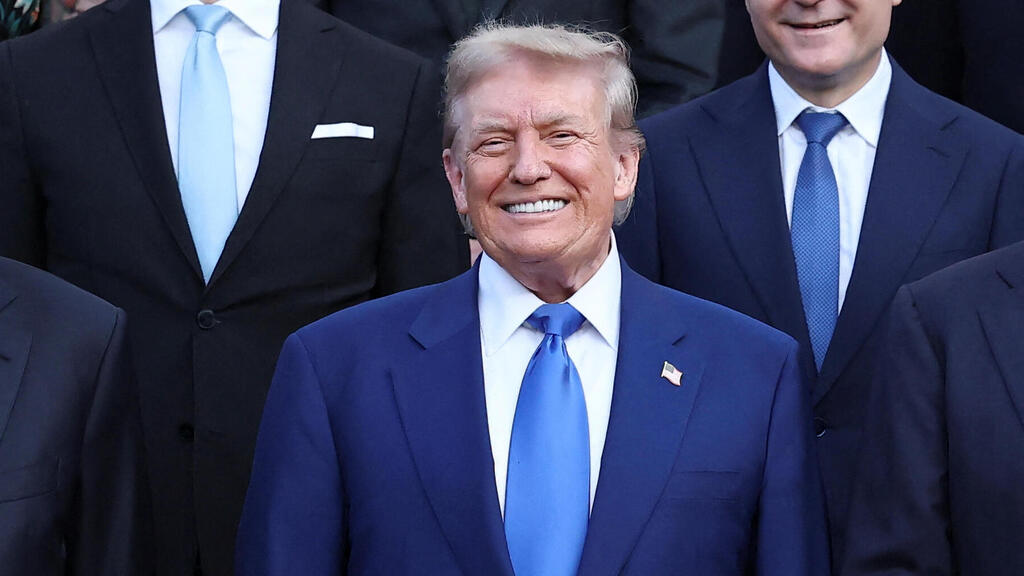However, the statement appears to be another chapter in a long pattern of offhand remarks and apparent slip-ups by Trump over the years, during which he has revealed sensitive information to the public.
Trump: Israel ‘has guys that go in there [Fordow]’
(Video: Reuters)
Speaking at the NATO summit in The Hague, Trump asserted that Israel “has guys that go in there [Fordow]” following a large-scale U.S. airstrike in which bunker-busting bombs were used to destroy the site. He added that as a result of this presence on the ground, Israel would soon report on the extent of the destruction.
4 View gallery


US President Donald Trump
(Photo: MAXAR TECHNOLOGIES/Handout via REUTERS, SATELLITE IMAGE ©2025 MAXAR TECHNOLOGIES / AFP)
Just last month, during an Oval Office ceremony to formally appoint Steve Witkoff as his Middle East envoy, Trump made another revealing aside, claiming that only 21 hostages remained alive in Gaza. He said that a week prior, the number had been 24, but “now it’s 21 are living.”
At the time, Israel had officially defined 24 of the 59 hostages held in Gaza as presumed living. Trump did not disclose the source of his information and remarked, “These are young people. Young people don’t die. Old people die. Young people don’t die under these conditions.”
On Oct. 6, 2023, ABC News reported that Trump had allegedly discussed sensitive information about American nuclear submarines with Australian billionaire Anthony Pratt, a member of his Mar-a-Lago club, after leaving the White House.
According to a source familiar with the matter, Pratt later shared the information with dozens of others, including foreign officials, his own employees and several journalists.
4 View gallery


Trump and boxes of classified documents found in his Mar-a-Lago estate
(Photo: AFP, Reuters)
ABC reported that prosecutors and FBI agents questioned Pratt at least twice within a year. Pratt testified that Trump revealed the standard number of nuclear warheads carried by U.S. submarines, as well as their ability to approach Russian submarines undetected. Pratt is said to have passed the information to at least 45 people, including six journalists, 11 of his company’s employees, 10 Australian officials and three former Australian prime ministers.
Due to the political sensitivity of the investigation and Trump’s 2024 presidential campaign, then-attorney general Merrick Garland appointed special counsel Jack Smith to lead the case. Smith ultimately charged Trump with 37 felony counts related to mishandling classified material. The charges included Unlawful possession or concealment of classified documents, obstruction of justice, conspiracy to obstruct justice, making false statements and willful retention of national defense information.
According to the indictment, Trump stored boxes containing classified documents in a bathroom, a shower, his bedroom, a ballroom and his office at Mar-a-Lago—a social club that had received “tens of thousands of visitors” before the FBI raid.
The indictment also described efforts by Trump to avoid returning the documents, even after a court order in May 2022 demanded their return. Among other actions, Trump allegedly suggested his lawyer mislead the FBI about the documents’ whereabouts and instructed an aide to move boxes to conceal them from investigators—and from one of his own attorneys.
In late August 2019, Iran failed in its third attempt that year to launch a space-bound missile. Just days later, Trump tweeted a high-resolution image showing detailed destruction at the Iranian launch site in the country’s north—leaving intelligence and security experts stunned and raising immediate questions about the image’s source.
Three years later, in November 2022, NPR resolved the mystery, reporting that the image originated from a classified spacecraft known as USA-224. The satellite is believed to be a KH-11 reconnaissance satellite valued at billions of dollars.
Trump posted the image hastily on social media, captioning it, “The United States of America was not involved in the catastrophic accident during final launch preparations for the Safir SLV Launch at Semnan Launch Site One in Iran,” and adding a sarcastic jab: “I wish Iran best wishes and good luck in determining what happened at Site One.”
Observers—including intelligence officials, experts and ordinary users—noticed a shadow and a glare in the center of the image, suggesting the president may have photographed a physical printout during a briefing, despite being unauthorized to do so.
According to Yahoo! News, Trump saw the image during a daily intelligence briefing, requested a copy and shared it with over 60 million Twitter followers roughly an hour later.
NPR reported that the U.S. government later declassified the original image after an extensive Pentagon review to determine whether the briefing slide could be released to the public. Still, significant elements in Trump’s posted version remained redacted—a clear sign he had shared part of the U.S. government’s most sensitive intelligence with the public.
Steven Aftergood, a specialist in secrecy and classification at the Federation of American Scientists, told NPR at the time: “He was getting literally a bird’s eye view of some of the most sensitive U.S. intelligence on Iran,” he said. “And the first thing he seemed to want to do was to blurt it out over Twitter.”
Even in 2019, the image Trump posted raised eyebrows among satellite imaging experts, who noted that the quality far exceeded that of previously released U.S. satellite photos. Some described the detail as “astonishing,” underscoring the impressive capabilities of American intelligence.
Media outlets speculated that the image hinted at military technologies not previously disclosed—and perhaps not meant to be. Experts also warned that revealing such capabilities, if intended to remain secret, could help U.S. adversaries better shield themselves from surveillance.
Trump reportedly shared the classified information during a May 2017 meeting at the White House with Russian Foreign Minister Sergey Lavrov and then-Ambassador to Washington Sergey Kislyak.
According to the report, the mission took place about a month after Trump’s inauguration in January 2017. Israeli special forces flew into Syria from Jordan aboard two Sikorsky CH-53 Sea Stallion helicopters. One source said operatives bugged a room where an ISIS terror cell was expected to meet, while another claimed they had rewired a nearby telephone line to capture all audio in the area. That same night, the team flew back to Israel—and even before the helicopters landed, intelligence officials were already receiving transmissions from the bugging devices.
Once the intelligence reached Mossad headquarters, Israeli officials reportedly chose to share it with their U.S. counterparts. A senior Israeli military official told the magazine that the decision was partly driven by professional pride—they wanted their partners in Washington to be impressed by the scope of their capabilities.
In the American intelligence community, the Israeli mission was considered a “classic” example of valuable allied intelligence that was not only operationally significant but potentially life-saving.
Based on the intelligence provided by Israel, the United States and the United Kingdom imposed a ban on laptops and electronic devices larger than a cellphone on flights departing from several Muslim-majority countries. The ban was lifted only after airports in those countries adopted new and stricter security protocols.
Still, the achievement was overshadowed by Trump’s meeting with the Russian officials, during which he boasted, “I get great intel. I have people brief me on great intel every day.” According to Vanity Fair, he revealed at least one classified operational detail that had not even been shared with America’s allies or members of Congress: the location of the Israeli operation.








